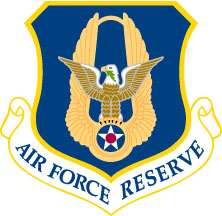Thu, Feb 27, 2003
Brrrr!!!
 Reservists from Air Force Reserve Command's 445th Airlift Wing
left for Antarctica, Feb. 12, aboard a C-141 Starlifter. The
aircrew members are participating in Operation Deep Freeze, a
passenger and cargo service for the U.S. National Science
Foundation's research facilities in Antarctica.
Reservists from Air Force Reserve Command's 445th Airlift Wing
left for Antarctica, Feb. 12, aboard a C-141 Starlifter. The
aircrew members are participating in Operation Deep Freeze, a
passenger and cargo service for the U.S. National Science
Foundation's research facilities in Antarctica.
The reservists flew to Christchurch, New Zealand, the staging
point for deployment to Antarctica's McMurdo Station. During their
two weeks in New Zealand, they will make several trips each week to
Antarctica to transport people and supplies. The missions to the
bottom of the world are flown in three phases. The initial
preparation phase, called Winfly because it occurs during winter in
Antarctica, begins in August. The re-supply phase takes place
during the continent's spring and summer from the end of September
through mid-November. The re-deployment phase takes place in
February.
In October, 445th AW aircrews airlifted people, supplies and
equipment to McMurdo Station for scientific operations at the
beginning of the south pole summer. With the dark Antarctic winter
on its way, the 445th AW will provide passenger and cargo service
for foundation people to return to New Zealand.

Operation Deep Freeze "missions are the most difficult missions
we operate in a non-combat environment because there is no margin
for error," said Col. David Walker, from the 4th Air Force
operations division at March Air Reserve Base, Calif. "The weather
conditions in Antarctica are like nowhere else in the world."
 Average temperatures in Antarctica range from
minus 70 F in the interior during the winter to 36 degrees along
the coast in the summer. Winds can gust up to 200 mph. The 445th AW
has been participating in Operation Deep Freeze since October 2001
along with the 452nd Air Mobility Wing from March ARB. C-141s have
been resupplying the National Science Foundation community in
Antarctica since 1966.
Average temperatures in Antarctica range from
minus 70 F in the interior during the winter to 36 degrees along
the coast in the summer. Winds can gust up to 200 mph. The 445th AW
has been participating in Operation Deep Freeze since October 2001
along with the 452nd Air Mobility Wing from March ARB. C-141s have
been resupplying the National Science Foundation community in
Antarctica since 1966.
Air Force C-17 Globemaster III aircraft are in the process of
taking over the mission as C-141s are being phased out of service.
(Courtesy of AFRC News Service)
More News
From 2023 (YouTube Edition): New Propulsion Scheme Optimized for AAM Applications Founded in 2017 by Eric Bartsch, Pat Anderson, and Erik Lindbergh (grandson of famed aviation pion>[...]
During The Initial Climb, The Engine Began To Operate Abnormally And, After About Three Seconds, Experienced A Total Loss Of Power On October 29, 2025, about 1820 Pacific daylight >[...]
Aero Linx: Women in Aviation International Women in Aviation International is the largest nonprofit organization that envisions a world where the sky is open to all, and where avia>[...]
“We’ve paid for the cable line’s repair for the customer and have apologized for the inconvenience this caused them...” Source: Some followup info from an A>[...]
“We have long warned about the devastating effects of pairing optimization. Multiple times over many months, we highlighted how schedule manipulation, unbalanced schedules, a>[...]
 Classic Aero-TV: VerdeGo Debuts VH-3 Hybrid-Electric Powerplant
Classic Aero-TV: VerdeGo Debuts VH-3 Hybrid-Electric Powerplant NTSB Prelim: Grumman American Avn. Corp. AA-5B
NTSB Prelim: Grumman American Avn. Corp. AA-5B ANN's Daily Aero-Linx (12.02.25)
ANN's Daily Aero-Linx (12.02.25) Aero-News: Quote of the Day (12.02.25)
Aero-News: Quote of the Day (12.02.25) Aero-News: Quote of the Day (12.03.25)
Aero-News: Quote of the Day (12.03.25)





